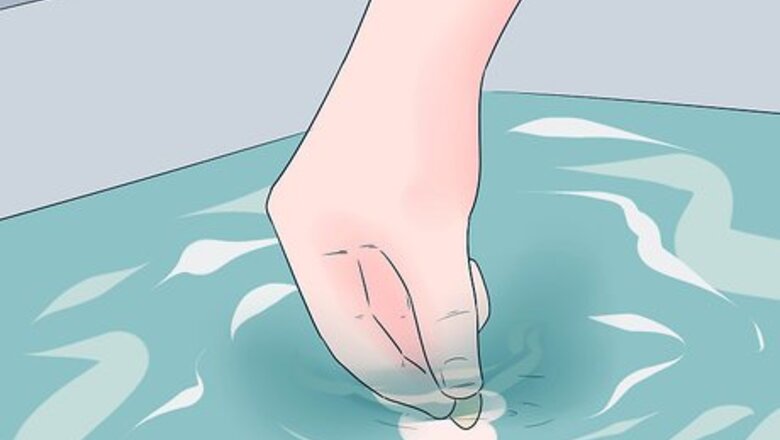
views
Discussing Hygiene and Safety Concerns
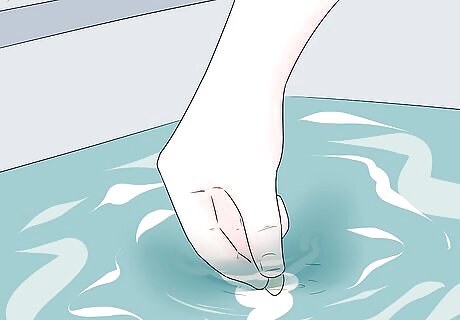
Be aware that poor hygiene is not always a choice. As people age, bathing may become difficult. This may be due to a fear of falling, difficulty getting in or out of the tub or shower, difficulty washing themselves, or even a result of a cognitive disorder, such as Alzheimer’s or dementia. As you start to approach an elderly family member or friend about their hygiene, keep all of these things in mind and aim to be as respectful and tactful as possible.

Get an idea of the person’s general grooming habits. Approaching the situation indirectly will avoid putting too much pressure on your loved one or client. It is important to make them feel comfortable before going about suggesting a change in routine, which for many elderly can be upsetting and difficult. For example, you can begin by asking whether they have enough grooming supplies, and if they respond yes, ask,”Well is that enough soap for your showers and baths this week? How many would you say you take on average?”, or if they respond no, “Just to get an idea for when I’m shopping, how many baths or showers a week should we restock you for?”

Suggest a change in routine. If you find out that they’re bathing fewer than two times a week, change your tone of voice from casually inquisitive to concerned. Approach the issue from a medical, rather than a personal, standpoint, stressing the importance of hygiene to overall health. Explain that doctors recommend bathing at least twice a week to prevent infection. Try something like, “You know I’ve heard on the news / from my doctor that not only should everyone bathe every week, they should bathe at least twice a week for better health. I think we should give this a try.”

Avoid mentioning any issues with odor. Bringing up body odor might disappoint or anger them, making it more difficult to convince them to change their routine. And since seniors can have a decreased sense of smell, they might not be aware that there is an odor problem. Pointing this out to them could cause anxiety if they’re unable to detect the odor and might wonder about it.

Ask the person about their concerns and needs regarding bathing. Depending on their physical condition, bathing or showering may be a source of anxiety—undressing, getting in and out of the tub, washing, drying off, and dressing might require more energy than they have. They may be afraid of falling in the tub, have had a bad experience with scalding or icy-cold water, or easily lose track of time. Take note of these for consideration when arranging for help with washing, and improving bathroom safety. To try to understand what anxieties they may have, ask questions such as, “Have you been hurt while using the tub, by falling, or by the temperature of the water?” or “Do you feel really tired after washing?” If fatigue or fear of falling seem to be issues, strongly consider either bathing the person yourself or hiring a caregiver.
Scheduling a Bathing Time

Give them an incentive to wash. If your loved one hasn’t been washing frequently enough, it’s likely they don’t feel the need to because they aren’t going out or seeing people regularly. You can give them an extra incentive to bathe by encouraging them to make plans. Go beyond simply suggesting things to do, and mark out specific plans with them on a calendar. Outings and activities that are easy arrange include lunch with friends or family, going to the movies or a musical performance, or a trip to the park.

Offer to help them wash. Even if they prefer to wash themselves, it’s safest to supervise your loved one for at least the first couple of washing sessions. Stress that you only want to be there to set things up and ensure safety, with the possibility of letting them wash on their own after making sure they feel safe. If you do help the person bathe, then try using tactful questions to help them with the bathing process. For example, you might ask things like, what kind of soap do you prefer? Do you need a washcloth? Is the water warm enough? You can also make tactful suggestions during the bathing process, such as, “Here’s the soap for washing your body.” Or, “I’m going to hand you the shampoo next so you can wash your hair.”

Ask suggestive questions to arrange a washing time. Instead of asking whether or not they want to bathe, pose your questions in a way that assumes they want to. Avoid yes or no questions, such as "Do you want to bathe or not?"--in addition to coming off as testy, this omits the assumption that more bathing should be done. For example, you can ask “When should I come back to help you with your bath?” or “What time of the day suits you best for showering?”
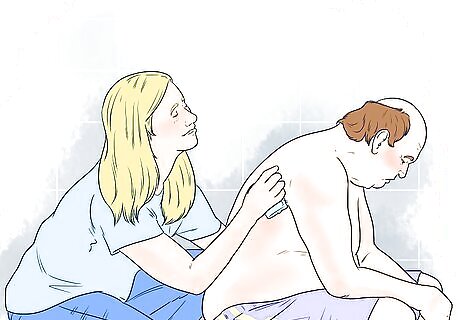
Arrange for help with washing. Depending on your relationship with the person, they may feel awkward about your helping them with such a private routine. If the person is living with a spouse or partner, first suggest that the spouse or partner help them bathe. If the pair seem open to this, begin by discussing and establishing a routine with both of them. Mark the washing days (at least two per week) on the calendar.

Schedule a caregiver. If the person can’t bathe alone and is uncomfortable with a family member helping out, hiring a caregiver for home visits is the best option. These services are widely available in most communities. Search your directory or the internet for “In-Home Health Provider” or “Home Health Care.” Schedule a bathing session for at least twice a week, marking it on a calendar that is easily visible (attached to the refrigerator, hanging on a wall in the kitchen). The idea of an unfamiliar person helping them to wash could be worrisome. Assure them that the caregiver is a professional, and is specifically trained to help people take care of themselves. Regardless of who helps with washing, remind the loved one that bathing can be a pleasant, refreshing experience and is important to staying healthy.
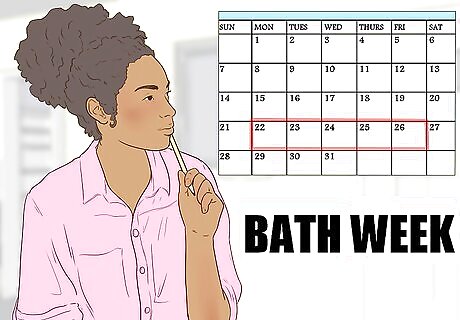
Set a regular washing schedule. Whether it’s you, a spouse, or a caregiver who will be helping, putting washing times on the calendar will help the loved one to improve their memory, and get a better sense of the week’s activities. When you or the caregiver arrives, it’s “bath time,” an event as expected and routine as dinnertime or bedtime.

Check in to make sure that washing is taking place as planned. If you’re not the one helping with washing, either ask the spouse or partner whether the schedule is being followed, or call the in-home agency to make sure the treatment is running smoothly. If the person is washing themselves, an easy way to make sure they’re using the bath regularly is to check the soap bar size and body wash / shampoo bottle levels to see whether they’ve been used. Since you’ve already completed the difficult task of asking them about hygiene, it should be easier at this point to casually ask whether they’ve been keeping to the new bathing schedule you’d agreed on.

Consult a doctor if you meet resistance. It’s possible that your loved one will refuse to bathe, despite repeated attempts on your part to explain the benefits and to offer to help. In this case, consult a family doctor, and ask about medications that are designed to ease resistance to care.
Ensuring Safety in the Bathroom
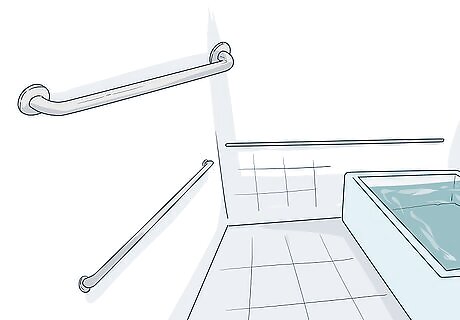
Install grab bars as needed. These can be very reassuring, and helpful for a person who has already fallen or is afraid of falling in the bathtub. They should be readily available at a pharmacy or bath supply store.

Install a tub bench / shower chair if the person can’t sit down in the tub. These are especially useful if there has already been a fall, or if there is apprehension about falling because of frailty or fatigue. Pharmacies or bath supply stores are again the best places to shop for these.

Add a non-slip mat or apply anti-slip tape to the base of the tub. Many bathtubs may already have this sandpaper-textured tape affixed to the bottom of the tub, but it could help to add more in the middle area where most of the standing is done when showering. Non-slip mats (for drying off) are available for the floor just outside the tub as well.
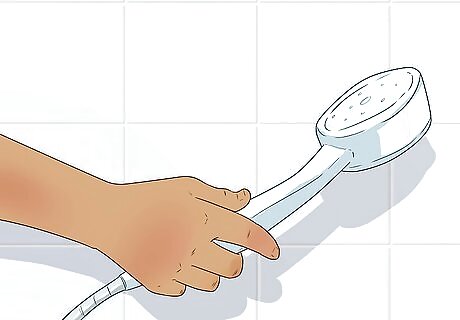
Install a handheld shower head. This will give the person more control while washing. It is also much safer, since it prevents falls by 1) eliminating the need to maneuver under the shower head to wash hard-to-reach areas, and 2) allowing them to sit in a shower chair while washing.
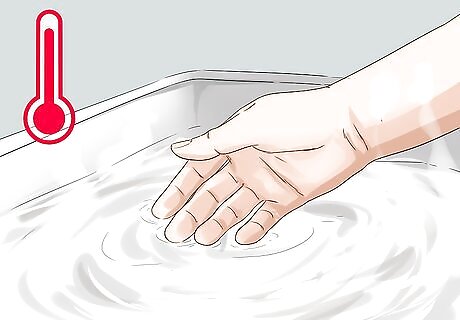
Ensure the proper functioning of the water system. Test the water temperature by hand. Let both the hot and cold water run for a few minutes each to check for major temperature fluctuations. If the temperature changes from hot to cold frequently, contact the landlord or hire a plumber to resolve the problem. If the person lives in an apartment, it’s best to do the test in the early morning when other residents will be showering, and fluctuations would be most common. Check the water heater’s temperature gauge, and make sure it is set to 120 degrees. This should help prevent scalding temperatures.



















Comments
0 comment